
AUTOMATION IN CONSTRUCTION
Scope & Guideline
Advancing Automation for a Smarter, Greener Construction Landscape
Introduction
Aims and Scopes
- Automation and Robotics in Construction:
Research on the application of robotics and automation technologies in construction tasks, including robotic fabrication, autonomous vehicles, and intelligent construction machinery. - Digital Twins and Smart Construction:
Exploration of digital twin technology and smart construction practices that enhance real-time monitoring, predictive maintenance, and operational efficiency in construction projects. - BIM and Data Integration:
Studies on Building Information Modeling (BIM) and the integration of diverse data sources for improved decision-making, project management, and lifecycle analysis. - Machine Learning and AI Applications:
Research focused on the application of machine learning and artificial intelligence for predictive analytics, risk assessment, and automation of construction processes. - Sustainability and Resilience in Construction:
Investigations into sustainable construction practices, including the use of eco-friendly materials, energy efficiency, and resilience to environmental challenges. - Construction Safety and Ergonomics:
Research aimed at improving safety standards and ergonomic practices in construction through innovative monitoring techniques and safety protocols.
Trending and Emerging
- AI and Machine Learning Integration:
There is a surge in research exploring AI and machine learning applications in construction, particularly for predictive maintenance, safety monitoring, and project optimization. - Robotics and Automation Technologies:
The development and application of robotics in construction tasks, including fabrication and site management, are rapidly expanding, with numerous studies highlighting advancements. - Digital Twins and Smart Infrastructure:
Increasing emphasis on digital twins for real-time monitoring and management of construction projects, enabling better decision-making and enhanced operational efficiency. - Sustainable Construction Practices:
A growing trend towards sustainability in construction, focusing on eco-friendly materials, energy-efficient designs, and practices that minimize environmental impact. - Data-Driven Decision-Making:
Research on the utilization of big data and IoT technologies for improved decision-making processes in construction projects is becoming increasingly prominent. - Augmented and Virtual Reality Applications:
The use of AR and VR technologies for training, design visualization, and construction site management is gaining momentum, reflecting a shift towards immersive technologies.
Declining or Waning
- Traditional Construction Methods:
There is a noticeable decrease in research focused on conventional construction techniques as the field shifts towards automation and advanced technologies. - Manual Inspection and Assessment Techniques:
Research on manual inspection methods for structural health monitoring has waned as automated and AI-driven techniques gain preference. - Low-tech Construction Practices:
Studies centered around low-tech or non-digital practices in construction are becoming less frequent, reflecting the industry's transition to digital solutions. - General Construction Management Frameworks:
The focus on broad, generalized construction management theories has diminished in favor of more specialized, technology-driven approaches.
Similar Journals

Civil Engineering Journal-Stavebni Obzor
Pioneering Research from the Heart of PragueWelcome to the Civil Engineering Journal-Stavebni Obzor, an esteemed academic publication dedicated to advancing the field of civil engineering. Published by the Czech Technical University in Prague, Faculty of Civil Engineering, this journal has provided a platform for innovative research and critical discourse since its inception. With an ISSN of 1210-4027 and an E-ISSN of 1805-2576, this Open Access journal has been facilitating wide dissemination of knowledge in civil engineering since 2014, ensuring that valuable research reaches a global audience without barriers. The journal is committed to fostering collaboration among researchers, professionals, and students, encouraging the exchange of ideas that drive the discipline forward. Its diverse scope encompasses various aspects of civil engineering, making it an essential resource for anyone looking to stay at the forefront of this dynamic field. Located in Prague, a hub of engineering excellence, this journal not only reflects the latest trends and innovations but also contributes to shaping the future of civil engineering.
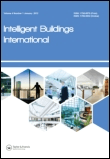
Intelligent Buildings International
Exploring Innovations in Intelligent Building DesignIntelligent Buildings International, published by Taylor & Francis Ltd, is a premier journal dedicated to advancing knowledge in the interdisciplinary domains of building construction, civil engineering, computer science applications, and planning. Since its inception in 2009, this journal has become a vital resource for researchers, professionals, and students, offering a platform for high-quality scholarly articles that explore innovative strategies and technologies in intelligent building design and efficiencies. With its significant impact factor reflected in its Q2 and Q3 quartile rankings across various related fields, and strong Scopus rankings placing it among the top journals in Geography, Building, and Civil Engineering, Intelligent Buildings International stands out for its commitment to fostering research that enhances the sustainability and functionality of contemporary architectural practices. Readers can access a wealth of articles that illuminate the complexities of smart building technologies and their implications for future construction practices, making it an essential addition to any academic library.

Revista Ingenieria de Construccion
Advancing the Frontiers of Construction EngineeringRevista Ingenieria de Construccion is a prominent open-access journal dedicated to advancing knowledge and practice in the fields of building and construction engineering, as well as civil and structural engineering. Published by the Pontificia Universidad Católica de Chile, specifically the Department of Engineering and Construction Management, this journal has been providing free access to quality research outputs since 1986, ensuring that vital information is available to both practitioners and academics globally. With its current placement in the Q4 category of both the Building and Construction and Civil and Structural Engineering quartiles, it serves as a platform for innovative studies and critical discussions, positioning itself strategically within the academic landscape. The journal is indexed in Scopus, ranking #157 in Building and Construction and #291 in Civil and Structural Engineering, reflecting the growing impact and relevance of its contributions. Researchers, professionals, and students are encouraged to engage with the rigorous and diverse content published within its pages, fostering a vibrant academic and practical discourse.

Baltic Journal of Road and Bridge Engineering
Engineering Progress: Your Resource for Cutting-Edge ResearchThe Baltic Journal of Road and Bridge Engineering, published by RIGA TECHNICAL UNIV-RTU, serves as a pivotal platform for disseminating cutting-edge research in the fields of building and construction as well as civil and structural engineering. Established as an Open Access journal since 2006, it fosters global collaboration and accessibility to critical engineering knowledge, facilitating the exchange of innovative ideas among researchers, professionals, and students. With a commendable impact factor and recognition in Scopus rankings, where it stands in the third quartile for both relevant engineering categories, the journal underscores its significance in advancing the discipline. The journal aims to publish high-quality, peer-reviewed articles that address contemporary challenges in road and bridge engineering, making it an essential resource for anyone involved in infrastructure development and research. Located in Lithuania at 6B Kipsalas Street, RIGA LV-1658, this journal not only highlights the latest advancements but also seeks to inspire future innovations in engineering practices.
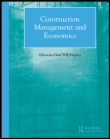
Construction Management and Economics
Advancing knowledge in construction management and economic strategies.Construction Management and Economics, established in 1983 and published by Routledge Journals, Taylor & Francis Ltd, is a premier academic journal that serves as a vital resource for professionals and researchers in the fields of construction management and economics. With an impressive 2023 impact factor reflected in its Q1 category rankings in Building and Construction, Industrial and Manufacturing Engineering, and Management Information Systems, the journal consistently publishes rigorous and influential research that shapes industry practices and academic thought. Addressing crucial topics from project management to economic evaluations within the construction sector, the journal offers an ideal platform for scholarly discourse and innovative research methodologies. Recognized for its high-quality content, it has established itself as a leading publication with notable Scopus rankings, ensuring that your work will reach a broad, specialized audience. Participants in construction-related fields can greatly benefit from the insights shared within these pages, while the absence of open access further emphasizes the journal's commitment to maintaining an academic standard that facilitates comprehensive peer review.

Russian Journal of Building Construction and Architecture
Elevating Architecture through Innovation and ResearchRussian Journal of Building Construction and Architecture (ISSN: 2542-0526; E-ISSN: 2542-0526), published by the esteemed Voronezh State Technical University, serves as a vital platform for disseminating innovative research and practical applications in the fields of building construction and architecture. This journal, situated in Voronezh, Russia, aims to explore both the theoretical and empirical aspects of contemporary architecture and construction practices, fostering a robust dialogue among researchers, professionals, and academics. With an emphasis on open access to knowledge, the journal significantly contributes to global discourse by ensuring that findings are accessible to a wide audience. Underlining the importance of sustainable development and cutting-edge technologies in construction, the journal strives to publish high-quality research that addresses the challenges faced in today’s building environment, making it an invaluable resource for those committed to advancing the industry.
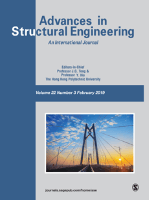
ADVANCES IN STRUCTURAL ENGINEERING
Unveiling Breakthroughs in Structural EngineeringADVANCES IN STRUCTURAL ENGINEERING, published by SAGE PUBLICATIONS INC, is a leading journal dedicated to the advancement of knowledge in the fields of Building and Construction, as well as Civil and Structural Engineering. With a solid impact factor and a commendable Scopus ranking (Rank #60 in Building and Construction, Rank #105 in Civil and Structural Engineering), this journal stands at the forefront of academic research, providing a platform for high-quality articles that contribute significantly to the discipline. Covering a range of topics from innovative construction techniques to sustainable engineering practices, the journal aims to foster collaborative dialogue among researchers, industry professionals, and students alike. As of 2023, it boasts impressive category quartiles, ranking Q1 in Building and Construction and Q2 in Civil and Structural Engineering. ADVANCES IN STRUCTURAL ENGINEERING is a vital resource for those looking to stay abreast of emerging trends and groundbreaking developments in structural engineering, promoting an environment of continuous learning and application of best practices. With a convergence of research from 1999 to 2024, the journal not only emphasizes theoretical frameworks but also bridges the gap between academia and practical application in engineering projects.
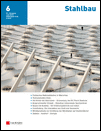
Stahlbau
Innovating Materials Science for Tomorrow's Construction.Stahlbau is a prestigious journal published by ERNST & SOHN, focusing on the intersection of materials science, civil engineering, and mechanical engineering. With its roots dating back to 1968 and extensive coverage through 2024, this journal serves as a vital platform for the dissemination of innovative research and insights in the fields of Building and Construction, Civil and Structural Engineering, and Advances in Metals and Alloys. Despite its categorization in the Q3 quartile across several disciplines, it is recognized for its rigorous peer-reviewed articles and its commitment to advancing knowledge in structural engineering and materials' performance. The journal aims to foster a dynamic dialogue among researchers, industry professionals, and students, making it an essential resource for anyone looking to stay at the forefront of developments in construction and materials engineering. Access options reflect a commitment to intellectual exchange in academia, emphasizing the journal's role as a cornerstone for emerging research and best practices.
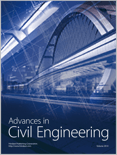
Advances in Civil Engineering
Elevating Standards in Civil Engineering ResearchAdvances in Civil Engineering is a leading peer-reviewed journal published by HINDAWI LTD, dedicated to advancing knowledge and innovation in the field of civil and structural engineering. Holding an esteemed Q2 ranking in the 2023 category for Civil and Structural Engineering, this journal serves as a vital platform for disseminating cutting-edge research and practical applications that address contemporary challenges in infrastructure development, sustainable design, and material science. Launched in 2008 and operating as an Open Access journal since 2009, it promotes the free exchange of ideas by ensuring that all articles are accessible to researchers, professionals, and students globally. The journal is also indexed in Scopus, ranking at #142 out of 379 in its category, situating it within the 62nd percentile of its peers. With a focus on interdisciplinary collaboration and innovative solutions, Advances in Civil Engineering contributes significantly to the ongoing evolution of engineering practices and education, making it an essential resource for anyone involved in or studying the ever-evolving field of civil engineering.
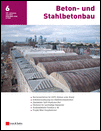
Beton- und Stahlbetonbau
Transforming Ideas into Concrete SolutionsBeton- und Stahlbetonbau is a renowned journal published by ERNST & SOHN, dedicated to advancing knowledge in the field of building and construction, particularly focusing on concrete and reinforced concrete engineering. Established in 1969, this peer-reviewed publication encompasses a broad range of topics, including innovative construction methods, structural analysis, and material performance, making it a crucial resource for researchers, scholars, and industry professionals alike. With an impact factor ranking it within the Q2 category in the Building and Construction field, this journal holds significant influence, evidenced by its Scopus rank of #112/223. Importantly, Beton- und Stahlbetonbau is committed to providing high-quality content that meets the academic rigor demanded by its audience, ensuring that readers remain at the forefront of technological advancements and research in concrete construction.